Salem Community Theater presents our 3rd Annual Fright Night at KSCT Radio—Sleepy Hollow: an old-time radio adaptation, Salem Community Center, 151 W 300 S, Salem, UT, Oct 19-21st, 7:00 PM
www.salemcommunitytheater.org, salemcommunitytheater@gmail.com, FB: @salemcommunitytheaterut, https://fb.me/e/18B7CQQil, Insta: @salemcommunitytheater,
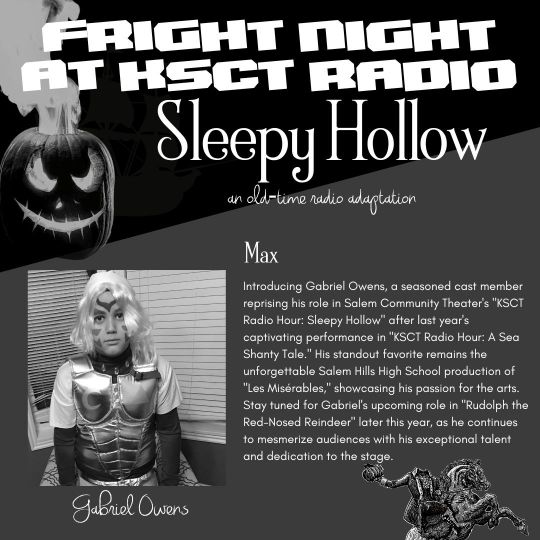
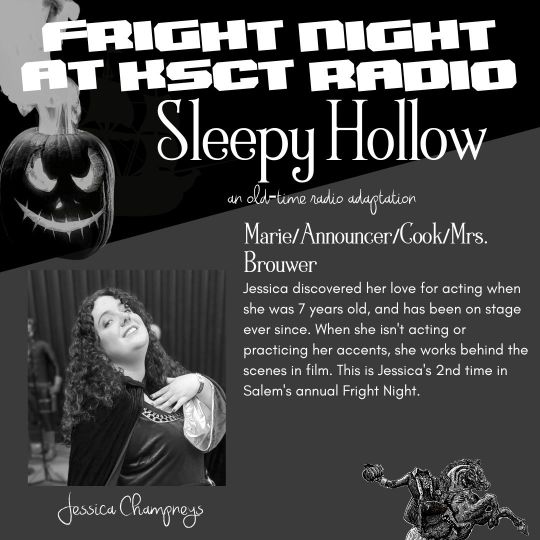
FRR: What is your favorite aspect of this production?
Max Williams, Director and writer: I have truly enjoyed writing the story Sleepy Hollow: an old-time radio adaptation and tying it into our previous productions. The characters have grown and developed over the past three years. It is great fun creating the dialogue and story surrounding the radio episodes. I also love that we have created a production for those who love theatre, but don’t have the time to be in a full-fledged production. This show is specifically designed to minimize rehearsal and production time so that everyone in the community has a chance to be involved.
FRR: Tell us about your cast.
MW: The cast has been amazing to work with. Some of them have been in every Fright Night show, reprising their roles year after year, and some of them are new this year. They are extremely talented and are as invested in the production as I am.
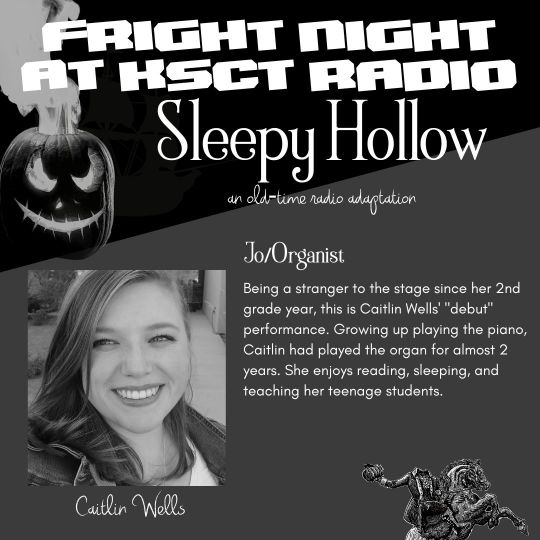

FRR: What is your background and training as a director?
MW: I have directed, written, and produced multiple shows over the years. I have been on stage since I was little and have been involved in almost every aspect of production from directing, performing, choreographing, set building, sound engineering, costume design, prop building, and whatever else needs doing. I co-founded a middle school theatre program in Washington state that became profitable and self-sustaining within one year. I have been involved with Salem Community Theater since 2019.
FRR: What is the biggest challenge of directing in general?
MW: The biggest challenge is also the biggest reward—creating a rewarding and fulfilling experience for everyone involved in the show.
FRR: What is the biggest challenge of directing this show?
MW: The sound effects are the most fun, but also the most challenging. Sometimes the most unrelated, mundane items make the perfect sound.
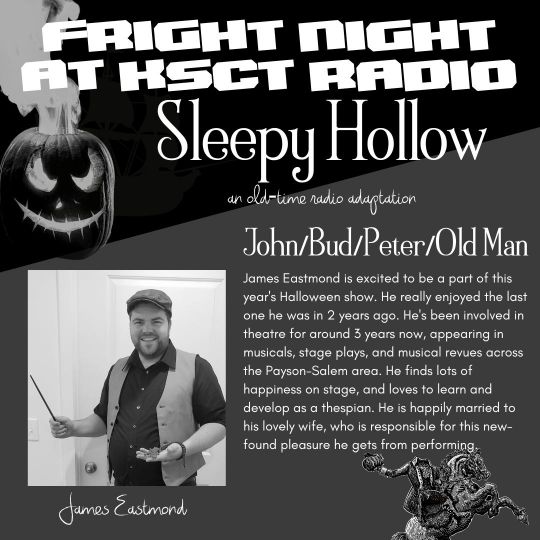
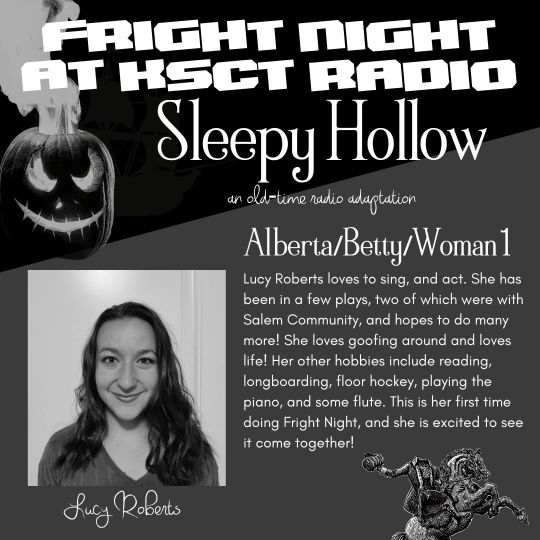
FRR: What are the surprises and delights you’re finding in directing this show?
MW: Each year, there are little tidbits or Easter eggs from previous productions. For example, Dorothy has fainted at some point each year. It is enjoyable for anyone joining us for the first time. But for those who have attended the show each year, there a some ongoing jokes sure to bring a smile.
FRR: What have been the delights and challenges in costuming this show?
MW: The actors are responsible for costuming themselves in period clothing based on what they think fits their character. With approval from the director, the costume plot has turned out to look very natural—like a normal day at the office (radio station).
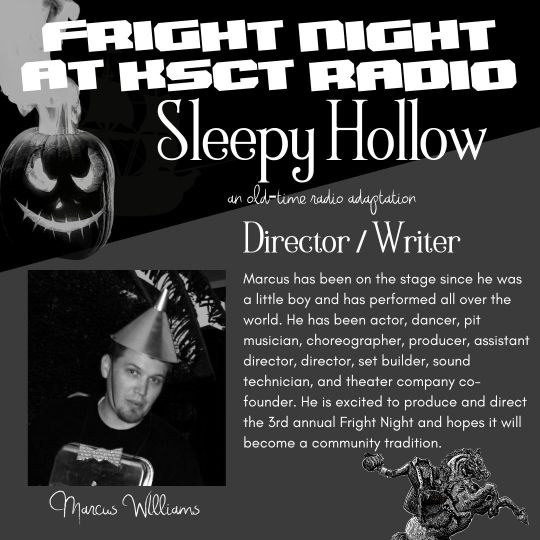
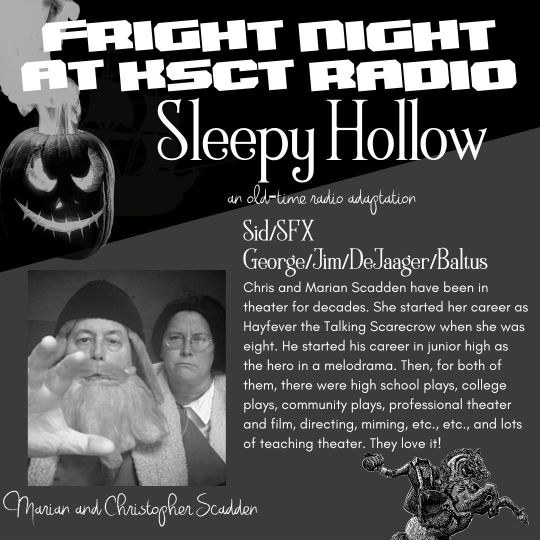
FRR: What kind of effect do you hope your audiences will see and feel as a result of your design?
MW: We want the audience to feel like they are watching the set of an old radio station. The mics and wires should appear natural and almost haphazard. The venue is small and simple, and so the focus is on the show, not elaborate sets. This year, we want to create a lightning effect for the audience so that they feel like there is a storm raging outside of the theatre during the show.
FRR: What is the mission of your theater/production company?
MW: Our mission is to unite our community by creating inclusive safe opportunities to participate in and enjoy wholesome quality theater.
FRR: How and when did opening your own theater start?
Salem Community Theater opened in 2017 with a production of Bye Bye Birdie. With the support of the Salem Recreation Department, local resident Amy McKay did all of the groundwork and spent countless hours creating a successful company.
FRR: What are the challenges and joys of running a theater/production company?
MW: It is a joy to bring theatre to the city of Salem and to give residents a place to perform and share their talents. One of the biggest challenges as a relatively new company is getting the word out to the community. We exist, we are active, and we are local!
FRR: What is the message you’re hoping to bring to your patrons about the arts?
MW: There is a place for anyone wanting to get involved in theater. We welcome you.
FRR: What is your background in this field?
MW: I am an independently published author.
The show script depicts the radio station employees before, during, and after their live performances of the various radio episodes. So there is a story within a story. We have used public domain episodes from actual radio shows interwoven with the radio station stories. The episode for year two (Cursed Waters) was written by Caleb Williams, a writer and editor. The adaptation of The Legend of Sleepy Hollow was written by Marcus Williams, a local author and the Program Manager of SCT. Marcus has also written the original radio station script for all three years.
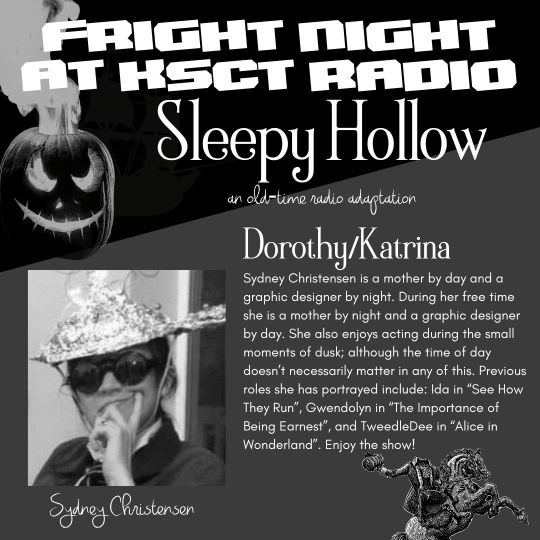
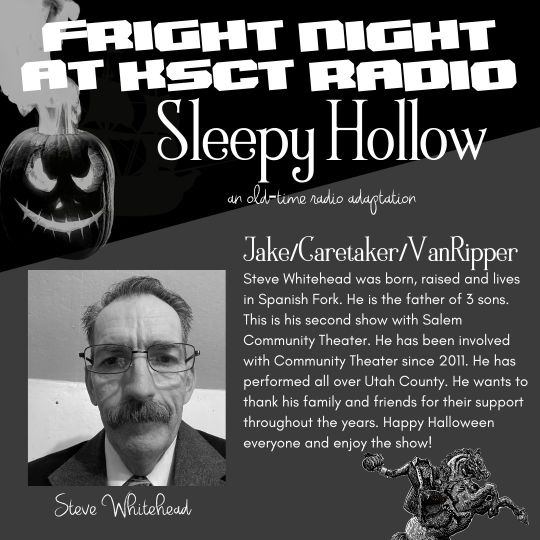
FRR: What do you hope your audience will take away from this piece?
MW: I want to keep old time radio alive. Listening to stories can be just as powerful as watching them.
FRR: What is your next project?
MW: Marcus has published the first three Fright Night shows on Amazon so that other companies might use
FRR: What is your favorite aspect of this production?
Max Williams, Director and writer: I have truly enjoyed writing the story Sleepy Hollow: an old-time radio adaptation and tying it into our previous productions. The characters have grown and developed over the past three years. It is great fun creating the dialogue and story surrounding the radio episodes. I also love that we have created a production for those who love theatre, but don’t have the time to be in a full-fledged production. This show is specifically designed to minimize rehearsal and production time so that everyone in the community has a chance to be involved.
FRR: Tell us about your cast.
MW: The cast has been amazing to work with. Some of them have been in every Fright Night show, reprising their roles year after year, and some of them are new this year. They are extremely talented and are as invested in the production as I am.
FRR: What is your background and training as a director?
MW: I have directed, written, and produced multiple shows over the years. I have been on stage since I was little and have been involved in almost every aspect of production from directing, performing, choreographing, set building, sound engineering, costume design, prop building, and whatever else needs doing. I co-founded a middle school theatre program in Washington state that became profitable and self-sustaining within one year. I have been involved with Salem Community Theater since 2019.
FRR: What is the biggest challenge of directing in general?
MW: The biggest challenge is also the biggest reward—creating a rewarding and fulfilling experience for everyone involved in the show.
FRR: What is the biggest challenge of directing this show?
MW: The sound effects are the most fun, but also the most challenging. Sometimes the most unrelated, mundane items make the perfect sound.
FRR: What are the surprises and delights you’re finding in directing this show?
MW: Each year, there are little tidbits or Easter eggs from previous productions. For example, Dorothy has fainted at some point each year. It is enjoyable for anyone joining us for the first time. But for those who have attended the show each year, there a some ongoing jokes sure to bring a smile.
FRR: What have been the delights and challenges in costuming this show?
MW: The actors are responsible for costuming themselves in period clothing based on what they think fits their character. With approval from the director, the costume plot has turned out to look very natural—like a normal day at the office (radio station).
FRR: What kind of effect do you hope your audiences will see and feel as a result of your design?
MW: We want the audience to feel like they are watching the set of an old radio station. The mics and wires should appear natural and almost haphazard. The venue is small and simple, and so the focus is on the show, not elaborate sets. This year, we want to create a lightning effect for the audience so that they feel like there is a storm raging outside of the theatre during the show.
FRR: What is the mission of your theater/production company?
MW: Our mission is to unite our community by creating inclusive safe opportunities to participate in and enjoy wholesome quality theater.
FRR: How and when did opening your own theater start?
Salem Community Theater opened in 2017 with a production of Bye Bye Birdie. With the support of the Salem Recreation Department, local resident Amy McKay did all of the groundwork and spent countless hours creating a successful company.
FRR: What are the challenges and joys of running a theater/production company?
MW: It is a joy to bring theatre to the city of Salem and to give residents a place to perform and share their talents. One of the biggest challenges as a relatively new company is getting the word out to the community. We exist, we are active, and we are local!
FRR: What is the message you’re hoping to bring to your patrons about the arts?
MW: There is a place for anyone wanting to get involved in theater. We welcome you.
FRR: What is your background in this field?
MW: I am an independently published author.
The show script depicts the radio station employees before, during, and after their live performances of the various radio episodes. So there is a story within a story. We have used public domain episodes from actual radio shows interwoven with the radio station stories. The episode for year two (Cursed Waters) was written by Caleb Williams, a writer and editor. The adaptation of The Legend of Sleepy Hollow was written by Marcus Williams, a local author and the Program Manager of SCT. Marcus has also written the original radio station script for all three years.
FRR: What do you hope your audience will take away from this piece?
MW: I want to keep old time radio alive. Listening to stories can be just as powerful as watching them.
FRR: What is your next project?
MW: Marcus has published the first 3 Fright Night shows on Amazon so that other companies might use them.

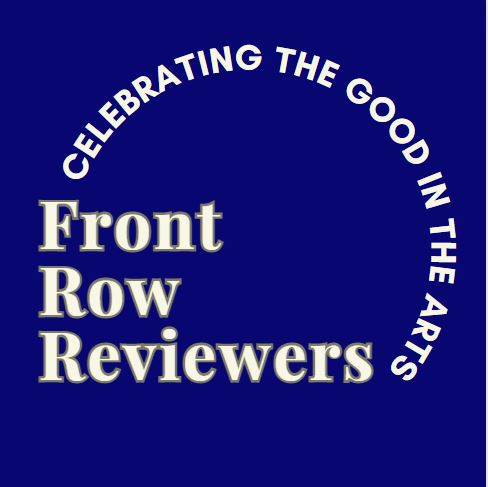

0 Comments